Abstract
A method is described for the determination of the pH of intracellular water based on the distribution of [14C]benzoate (0.01 mM) between intra- and extra-cellular water. Benzoate at higher concentrations (2-10mM) enters the yeast cell in the undissociated form, and its neutralization within the cell can cause a shift of the pH of the intracellular water by more than 1 pH unit. Benzoate causes an accumulation of the two hexose monophosphates of yeast glucose fermentation and a decrease in intermediates beyond phosphofructokinase, suggesting inhibition at this stage. Benzoate also causes a concomitant fall in [ATP]. Phosphofructokinase is inhibited to a greater extent than hexokinase at acid pH. There is a relationship between intracellular pH, phosphofructokinase inhibition and CO2 production, suggesting that the antifungal action of benzoate is caused by an accumulation of benzoate at low external pH, which lowers the intracellular pH into the range where phosphofructokinase is sensitive. The subsequent inhibition of glycolysis causes a fall in [ATP] and thus restricts growth.
Full text
PDF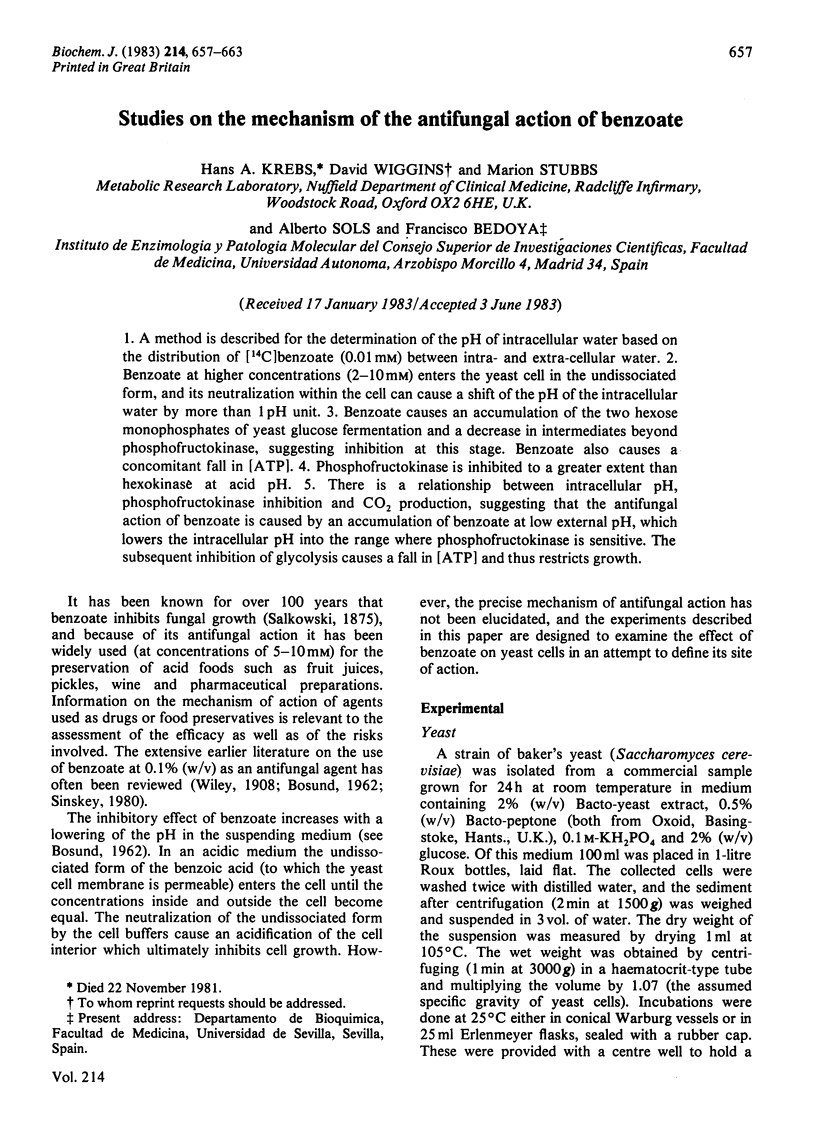
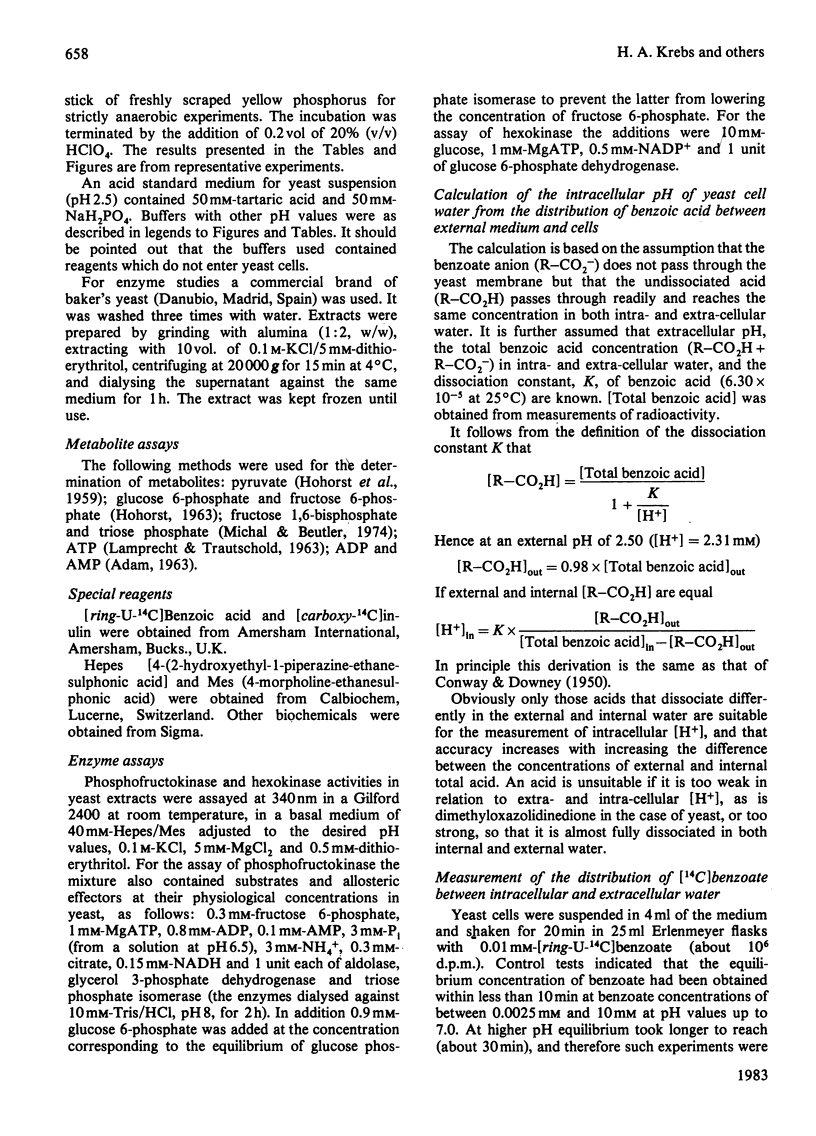
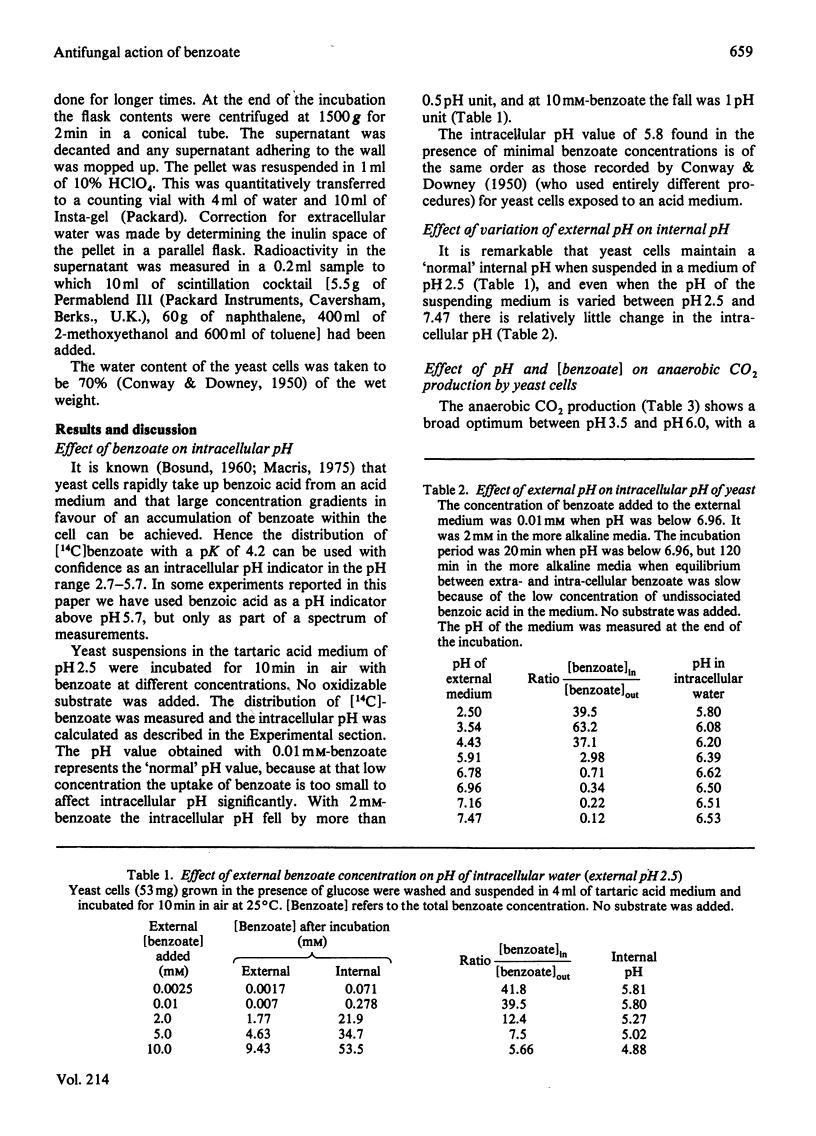
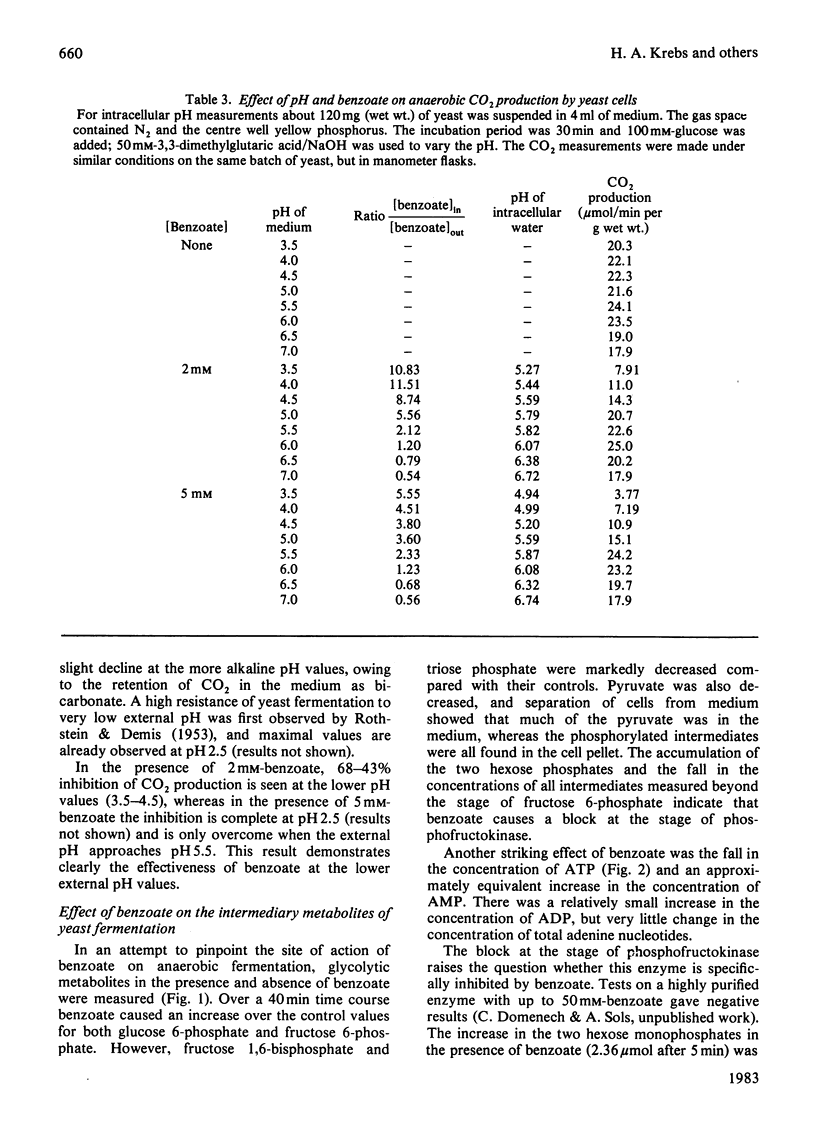
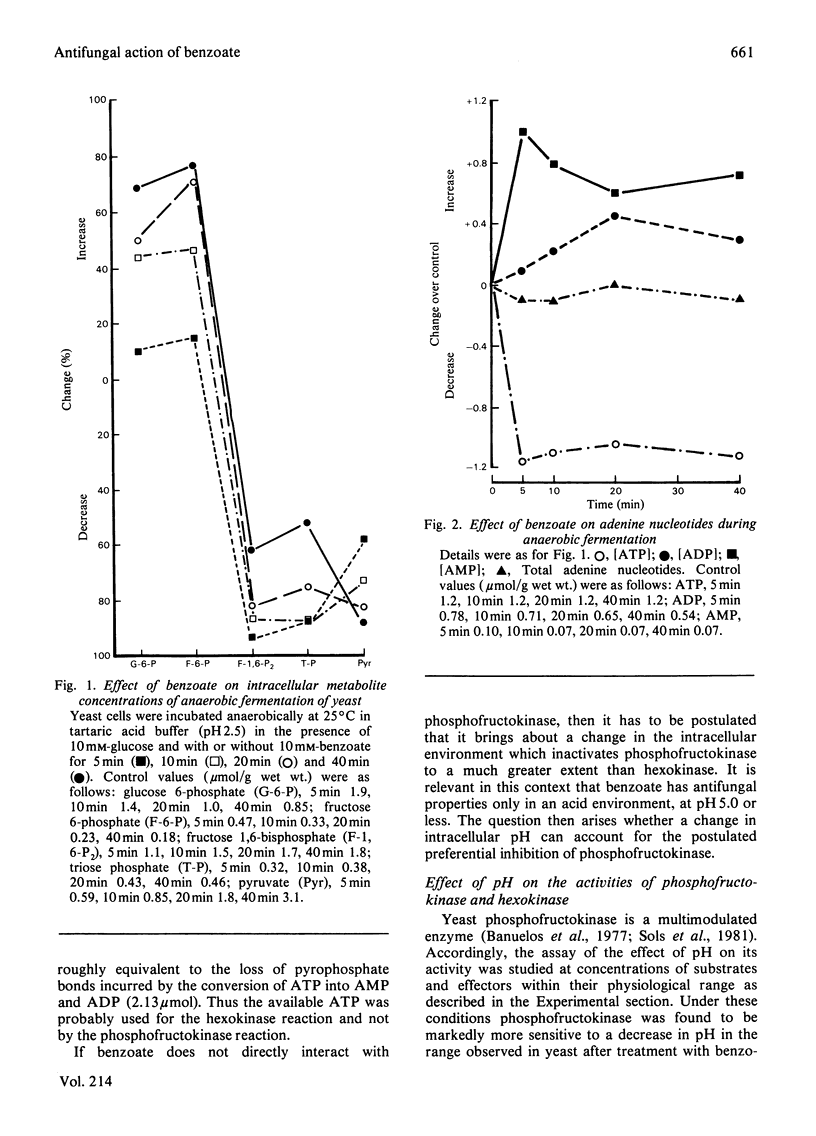
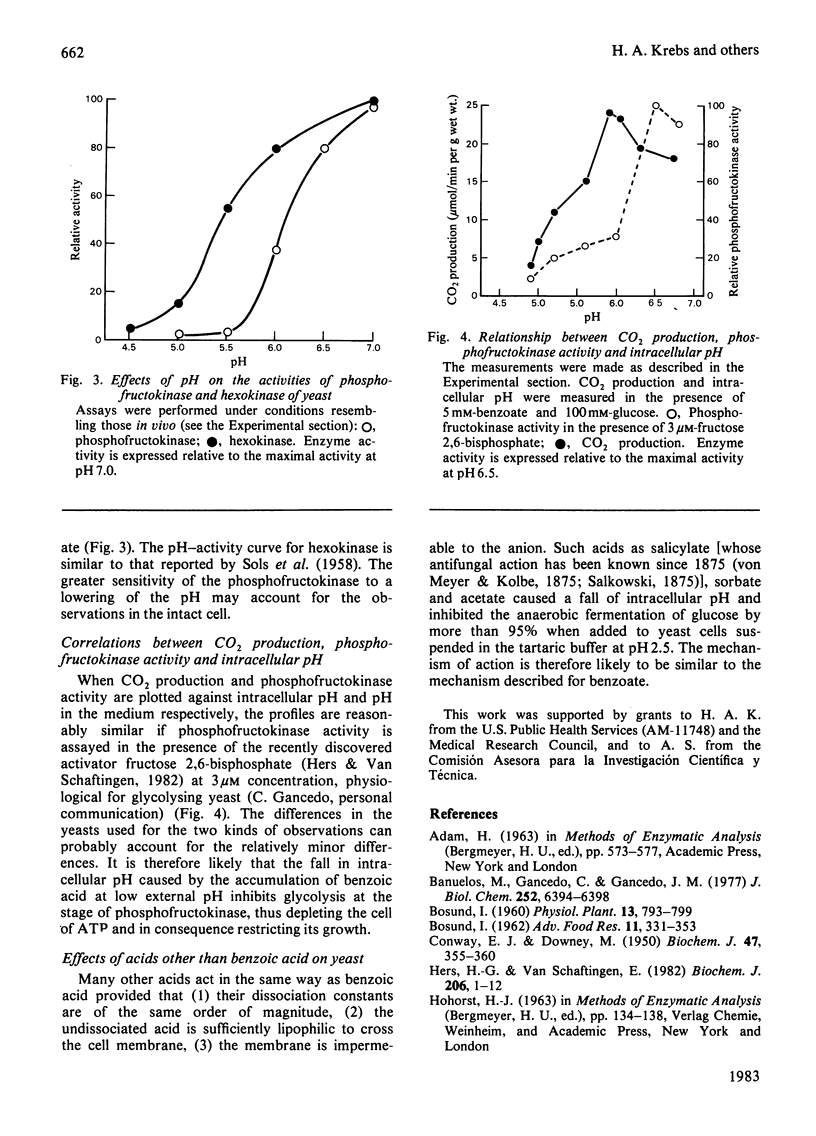
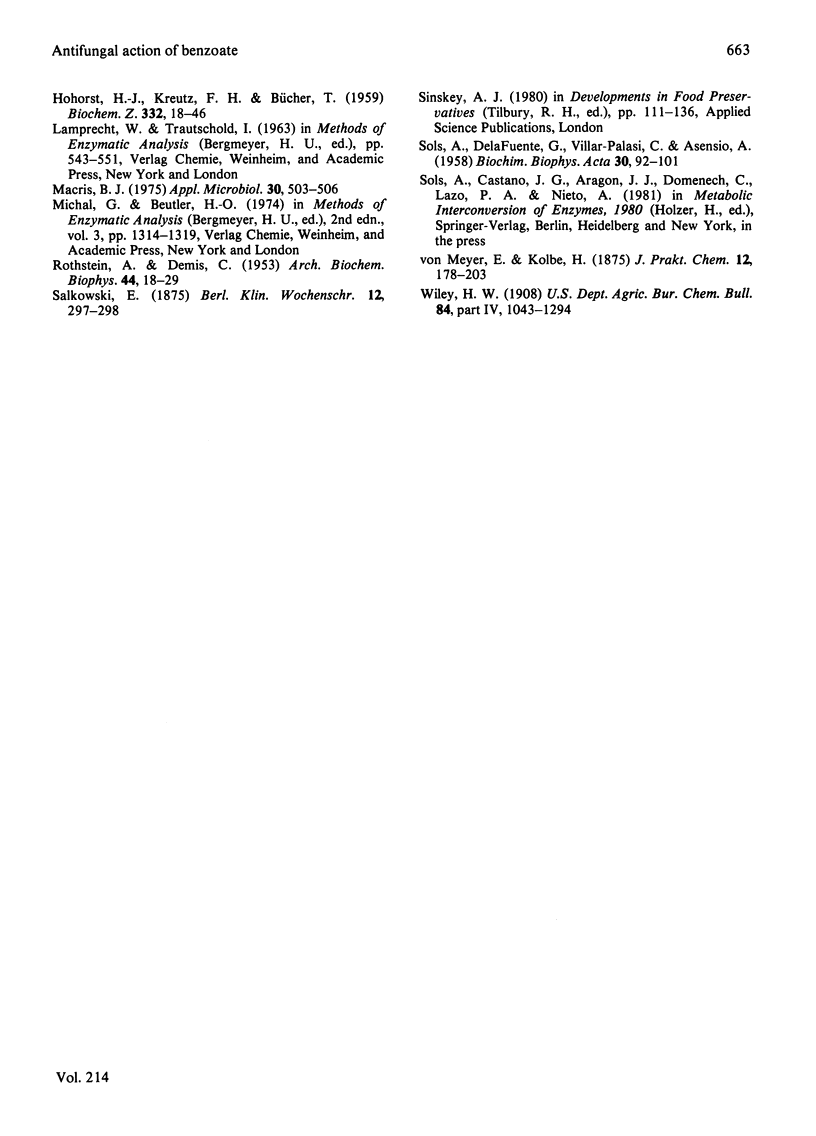
Selected References
These references are in PubMed. This may not be the complete list of references from this article.
- Bañuelos M., Gancedo C., Gancedo J. M. Activation by phosphate of yeast phosphofructokinase. J Biol Chem. 1977 Sep 25;252(18):6394–6398. [PubMed] [Google Scholar]
- CONWAY E. J., DOWNEY M. pH values of the yeast cell. Biochem J. 1950 Sep;47(3):355–360. doi: 10.1042/bj0470355. [DOI] [PMC free article] [PubMed] [Google Scholar]
- HOHORST H. J., KREUTZ F. H., BUECHER T. [On the metabolite content and the metabolite concentration in the liver of the rat]. Biochem Z. 1959;332:18–46. [PubMed] [Google Scholar]
- Hers H. G., Van Schaftingen E. Fructose 2,6-bisphosphate 2 years after its discovery. Biochem J. 1982 Jul 15;206(1):1–12. doi: 10.1042/bj2060001. [DOI] [PMC free article] [PubMed] [Google Scholar]
- Macris B. J. Mechanism of benzoic acid uptake by Saccharomyces cerevisiae. Appl Microbiol. 1975 Oct;30(4):503–506. doi: 10.1128/am.30.4.503-506.1975. [DOI] [PMC free article] [PubMed] [Google Scholar]
- ROTHSTEIN A., DEMIS C. The relationship of the cell surface to metabolism; the stimulation of fermentation by extracellular potassium. Arch Biochem Biophys. 1953 May;44(1):18–29. doi: 10.1016/0003-9861(53)90005-8. [DOI] [PubMed] [Google Scholar]


